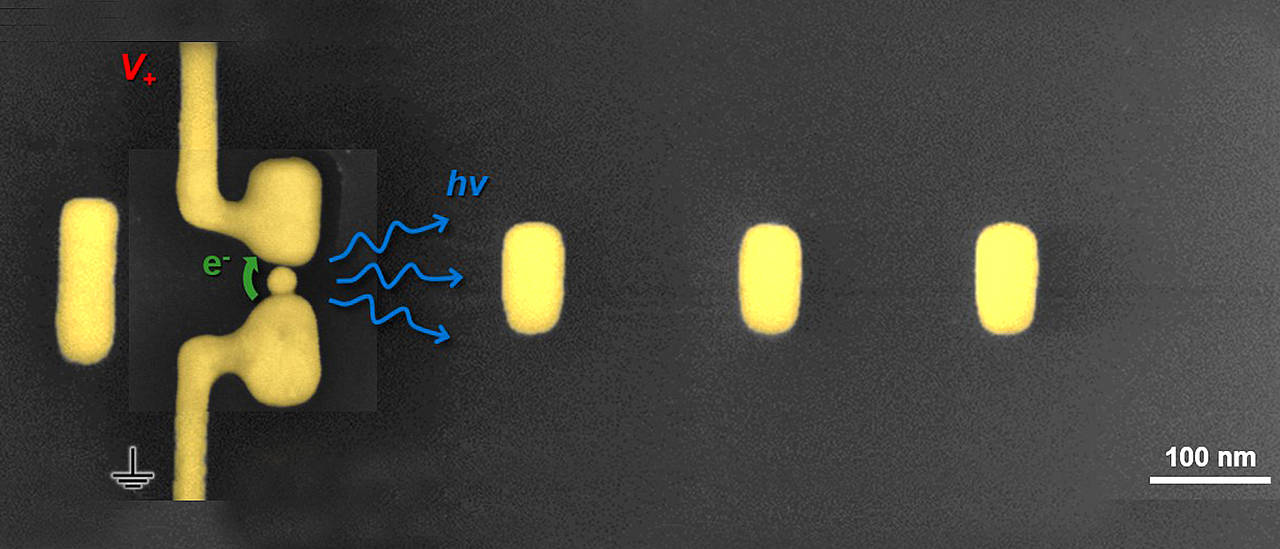With a miniature version of the kind of television antennas that often adorned rooftops before the advent of satellite and cable TV, researchers have demonstrated the conversion of electrical signals into light beamed in a particular direction. This device, referred to as a directional antenna, could be used to generate light for data transfer purposes on the nanometer (nm) scale—or billionths of a meter—needed for today’s electronics components. See also: Antenna (electromagnetism); Data communications; Nanotechnology

The specific directional antenna that the researchers built is known as a Yagi-Uda antenna, named for Hidetsugu Yagi and Shintaro Uda, two Japanese researchers who invented this technology in the 1920s. Ordinarily, a Yagi-Uda antenna works with radio waves, which have much longer wavelengths than optical light. In order to work with optical light, scientists had to shrink the antenna design down to nanoscale levels. (Optical, or visible, light has wavelengths from about 380 nm to 720 nm.) See also: Electromagnetic radiation; Light; Yagi-Uda antenna
Researchers carved out the particular shape forthe miniaturized Yagi-Uda antenna by bombarding gold with gallium ions. When the antenna is placed on a glass substrate, it measures about 800 nm in length in an optimal configuration, making it the smallest electrically powered light source on record. A gold nanoparticle that is placed on one of the antenna's two active elements just about touches the second element but leaves a miniscule gap of about 1 nm. When voltage is applied, electrons can cross this gap because of a phenomenon known as quantum tunneling. The movement of the electron causes it to lose energy in the form of light. An additional set of elements—namely, a resonator and a series of directors—absorb and re-radiate the light. The re-radiation generates patterns of destructive interference away from the intended direction of the light, and constructive interference in the intended direction, boosting the antenna's gain. See also: Electron; Gain; Gallium; Gold; Interference of waves; Nanoparticle; Quantum mechanics; Tunneling in solids
The antenna overall remains a work in progress,with development still required on a receiver of light signals, along with improvements to stability and efficiency. Once those challenges are addressed, the miniature light source could enable a high-fidelity data exchange between computer processors, along with a host of other technological applications. See also: Microprocessor





